Late-Season Stars: Your Complete Aster Flower Guide
Updated: Oct. 24, 2023
Asters glow brightly in your fall garden. Learn all you need to know them, including the best aster flower varieties, growing tips, and more.
Aster Flower Benefits
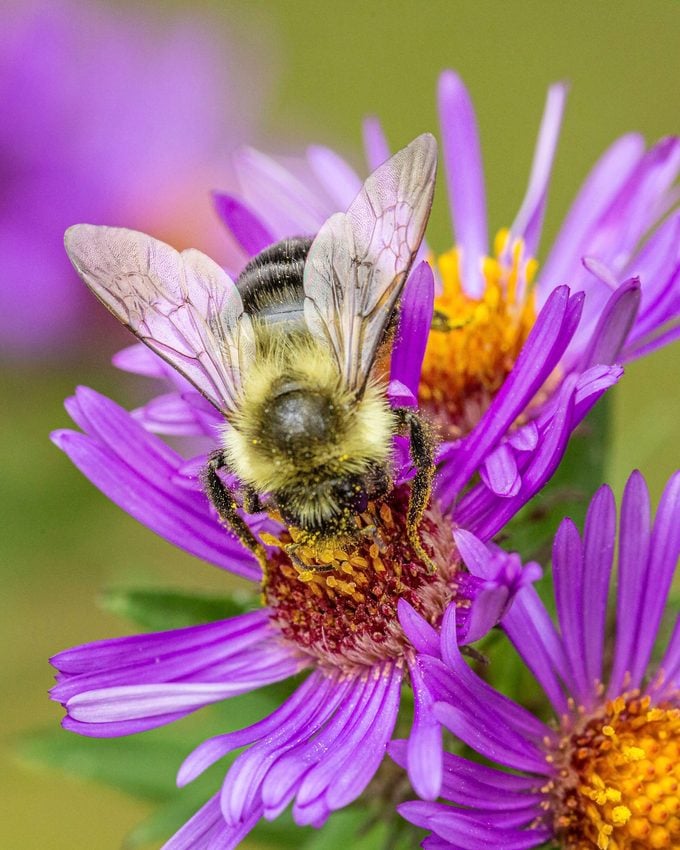
Come fall, a surge of vibrant color is welcome in most gardens. Asters, true to their name’s meaning of “star” in the Greek language, are proven performers. They provide a gorgeous display of pink, purple, blue and white blossoms that perk up dreary beds. Some of these wildflowers are native to North America, and are readily available and easy to grow, making them a smart choice in any landscape.
Ranging from 1 to 6 feet tall and 1 to 4 feet wide, asters are popular because they are relatively free of problems and are also deer resistant, says Evan Santi, president of Urban Plantscapes, which services the Pittsburgh, Pennsylvania and New York City areas. “They are related to sunflowers and chrysanthemums and have that same look if you examine the structure of the flower,” Evan says. Beyond offering gardeners stunning blooms, asters draw a flurry of wildlife to their symphony of color, adds Evan.
Here’s how to attract butterflies with asters.
Plenty of Aster Varieties to Grow
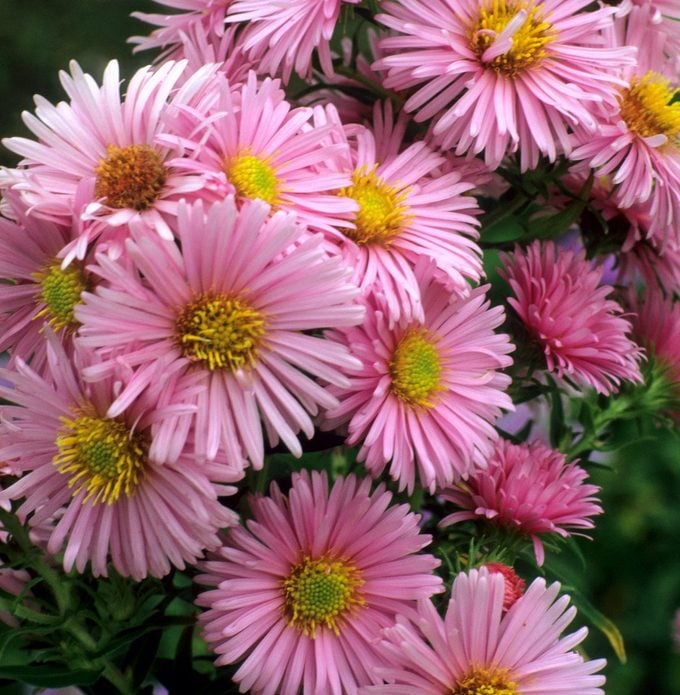
North American aster flowers fall into the herbaceous perennial family Asteraceae. You will find a variety of asters available, including heath, calico, aromatic, smooth and wood, in addition to the two most popular aster species: New York and New England.
“I usually recommend people go with the natives because they’re just beautiful,” Evan says. “They offer pollen and nectar in very late fall and sometimes even early winter, which are lacking later in the season for the bees and other wildlife.”
New York asters are hardy in Zones 4 to 8 while New England ones are hardy to Zones 3 to 8. Both produce clusters of star-shaped blossoms. They appear similar, but you can tell them apart. New York asters (Symphyotrichum novi-belgii) usually grow 2 to 3 feet tall and have thin stems and smooth leaves. Meanwhile, New England asters (S. novae-angliae) reach 3 to 4 feet tall with thick stems, hairy leaves and denser flowers.
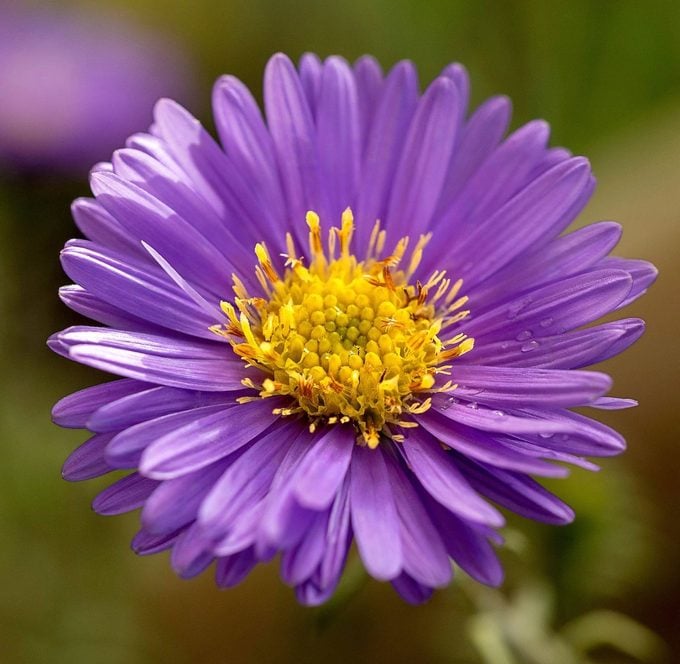
“New England is a bit more drought tolerant,” Evan says, “and the New York aster is also called purple aster because of its iconic purple color.”
He also recommends three other picks in particular: The blue wood aster flower (S. cordifolium) is a beautiful lavender bluish color; the parasol whitetop or flat-topped white aster flower (Doellingeria umbellata) has unique-looking white petals; and the gorgeous aromatic aster flower (S. oblongifolium) is known for its aroma, which attracts all types of birds and bees.
Did you know asters are the birth flower for September?
Aster Flower Care
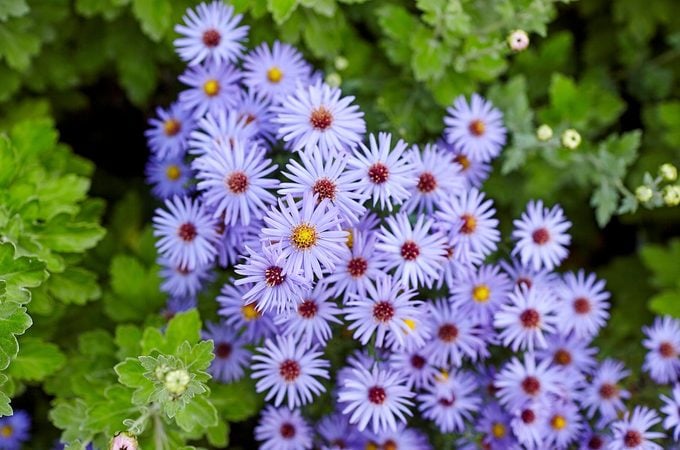
You can plant asters at any time during the growing season, and most can tolerate a wide range of soil types. “Native asters don’t require a ton of fertilizer,” Evan says. He recommends using the same kind of fertilizer that you would also use throughout the rest of your garden. Established asters have to be watered only in extreme heat and drought, while the swamp aster (S. puniceum) excels in wet soil.
Asters prefer full sun, which helps them develop strong stems. Some varieties tolerate part shade but will produce fewer blooms. Planting in well-draining soil with good air circulation helps prevent powdery mildew and rust, which can affect some asters. Amend the soil each spring by spreading compost around the base of plants, then top with mulch to retain moisture and deter weeds.
Asters growing over 3 feet tall may need staking at the beginning of the season so plants don’t fall over, according to Evan. To get more blooms, pinch the tops of asters in late June. This will promote branching and create a shorter, bushier plant that extends the flowering season. Though Evan points out that it can take time to do this because there are so many stems, “you’ll get that big splash at the end,” he says.
Showcase asters among other late-summer bloomers. Planted alongside daisies and daylilies, taller asters offer color well into late fall. Shorter ones shine near low-growing geraniums. “I like the way asters look with Joe Pye weed, purple coneflower, blazing star, yarrow and goldenrod,” Evan says. Tucked in front of ornamental grasses, asters provide a tiered effect, he adds.
Find out how to grow native Stokes’ aster.
Fall Garden To-Do’s
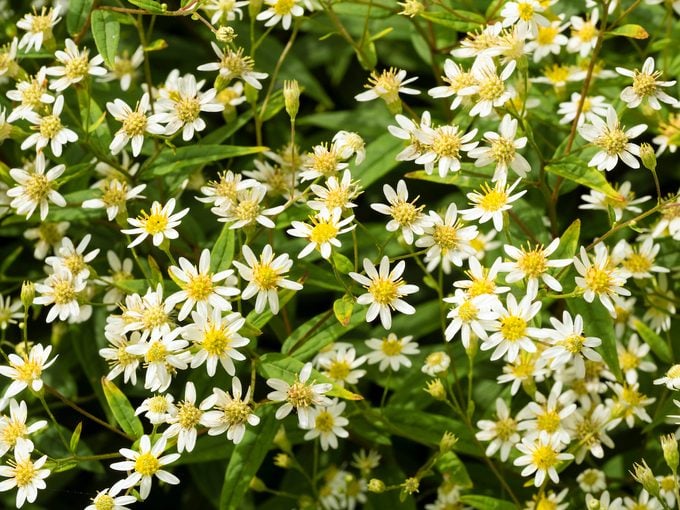
You don’t need to do much to existing asters. Leaving them standing is helpful for the birds and other wildlife. Many asters self-seed after blooming, so if you don’t want seedlings popping up in unwanted places, trim off the spent flowers. You can propagate asters every three to four years if they become too unruly and you want more plants.
“Some asters grow from rhizomes, so you can divide them in the off-season,” Evan says. He recommends lifting the plant and cutting off the outer sections, making sure to include several shoots and roots. Then, transplant them immediately.
Check out more of the best fall flowers (that aren’t mums).
5 Aster Flower Varieties to Try
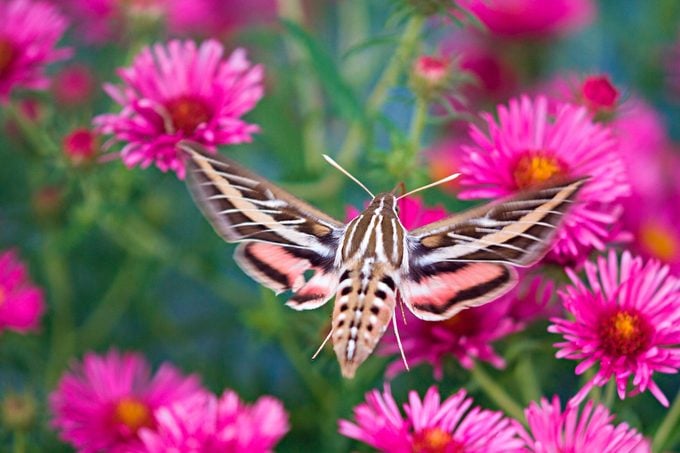
Add a pop to the garden with these New England aster picks
- Alma Potschke
- Harrington’s Pink
- Hella Lacy
- Purple Dome
- September Ruby
Next, discover the top 10 dazzling types of daisies you should grow.




















